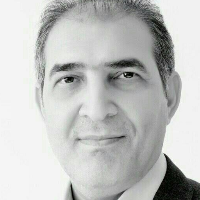The concept of technology in architecture and explaining its components using Delphi method
Given the increasing significance of technology in the progress and development of every society, along with the need to have a proper understanding of its meaning and concept to promote architecture, it is imperative to conduct a comprehensive study on technology in the architectural context. It is not an overstatement to claim that all scholars of architectural history have somehow addressed the importance and concept of technology in architecture and have considered its role in the emergence of architecture. Meanwhile, research shows that technology in popular culture refers to machines, but there are other definitions for scholars. Consequently, extensive research in recent years has explored this subject, with experts presenting various viewpoints. But sometimes issues such as inappropriate, incomplete and inaccurate conceptualizations cause problems in these studies. Consequently, when referring to “technology in architecture,”, one cannot precisely define technology and its related components, which in its turn poses a big problem. Technology involves different beliefs and approaches and the purpose of this article is to refine the conceptual space of technology and to provide a more precise conceptualization with the help of its components. The questions that emerge are: What precisely is the definition of technology, given the wide range of opinions and the absence of a unified perspective on this term? To achieve a comprehensive definition of technology and address the diverse and occasionally contradictory interpretations, what indicators and components can be mentioned for this category?
To address these questions, we will closely review the etymology of this concept, trace its historical development, explore the growth of theoretical perspectives, scrutinize related definitions, and analyze its associated characteristics. For this purpose, using the bibliographic method and conceptual analysis and, the views and theories of the experts are first examined and analyzed. Then, the indicators were elaborated by focusing on the commonalities of the existing definitions. Thus, through the analysis of scholars’ perspectives, 10 indicators were assessed based on expert definitions and assigned scores. Among these indicators, six had the highest mean scores, implying the need to employ the Delphi method to assess the validity and reliability of these components. Consequently, these components are subjected to evaluation to ascertain their significance as perceived by Iranian scholars, with rankings derived from the perspectives of 23 experts who participated in this study.
This test was conducted by interviewing the experts in two rounds. In the end, it was determined from the experts’ point of view which components were more important and which were less significant. Finally, one can achieve the highest level of success with these steps and arrive at a comprehensive definition of technology and its associated elements by considering the theoretical approaches put forth by experts. The findings indicate that among the components of “tools (hard tools and devices)”, “scientific knowledge”, “practical-experimental knowledge”, “process-system”, “techno-industry” and “manufacturing-production”, the components of “tools” as well as “techno-industry” scored the highest and the “practical-experimental knowledge” component scored the lowest.
In general, it is evident from the scholars’ perspectives presented in the table that their opinions align with those of the Delphi method experts. This means that for both groups, the “tool” component has the highest score. According to a wide range of definitions in terms of different opinions (positive to negative attitude) on the nature of technology, it was observed that some approach it in terms of its use or function, while others focus on its underlying meanings and concepts. In the end, according to the components, technology can be defined as the application of science, experience and human skills to meet human needs. It is a set of tools, skills, knowledge, and information known as technology components. This implies that not only the absence of these components but also the absence of synchronization among them can impact the ineffectiveness of the technology.
-
Examining the interior components of architecture and prioritizing based on their impact on user emotion in educational space
Mahdie Niroumand Shishavān, Farzin Haqhparast *, Abbās Ghaffāri, Narges Adabi
Quarterly Journal of Educational Innovations, -
Assessing the Conceptual and Spatial Aspects of Persian Gardens through the Lens of the Qur’an: A Questionnaire-Based Survey
Shamim Nottagh, Azita Belali Oskui *, , Vahid Heidar Nattaj, Rahim Charkhi
Journal of Interdisciplinary Qur'anic Studies, Winter and Spring 2024



